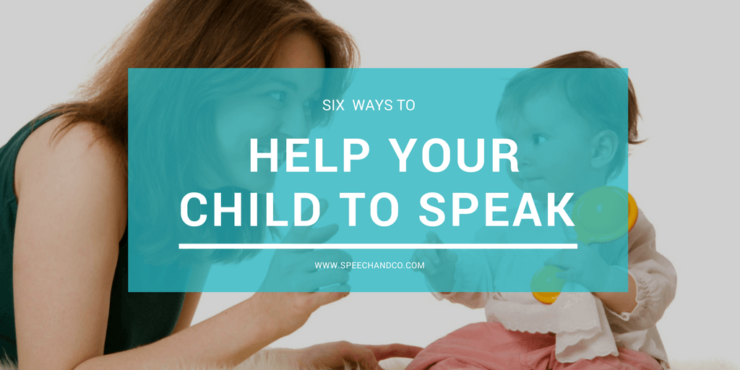The question we get most often in our practice at Speech & Company is “How do I get my child to talk?” Of course, there isn’t just one simple answer, but there are a number of tips that can help.
6 Ways to Help Your Child to Speak
1) Get Face-to-Face with your child. This allows your child to pay closer attention to your face and what you are doing with your lips, tongue, etc. It also lets YOU pay attention to what your child is interested in and makes it easier for you to identify your child’s attempts at communication. Communication does not need to be in the form of words or sentences. It could be as simple as a look, a gesture, sounds or words.
2) Follow Your Child’s Lead. We all have our OWN favourite toys, however, it is important to follow what toys and activities your CHILD is interested in. When your child is interested, their motivation to learn and communicate is enhanced. Respond enthusiastically to your child’s interests and join them in this activity. This interaction allows for many communication opportunities, and most importantly, your child will love this special time with mom or dad!
3) Interpret Your Child’s Message. Your child may not use words, but you can still help their communication along by interpreting what they are “saying” to you. Your child may be pointing or nodding, pulling you towards an item, or making sounds. These are all great preverbal ways of communicating but to help those words along, interpret your child’s message by saying a word or phrase that matches your child’s gesture or sound. In other words, say what your child would say if he/she could. For example, your child points to the bubble you just blew, you can say “bubble, big bubble.”.

Other techniques are what Speech Pathologists call, “Communication Temptations”. Communication temptations “tempt” the child by setting up the environment so that the child has a reason to communicate.
Some examples of communication temptations are:
1) Give your child a piece of cracker/snack one at a time. Instead of providing your child with his full serving, offering a smaller portion allows him the chance to ask for another piece/more. If your child doesn’t request for more food, then model the word/phrase you would like him to say (e.g. “more apple”, “fishy”, etc)
2) Put your child’s favourite toy or snack in a container that is difficult to open, then give the container to your child. Again, the purpose in this is not to frustrate your child but rather tempt him to communicate. Encourage your child to request the item by modeling the desired request (e.g. “open”, “off”, “toy”, “help”, etc).
3) Give your child only a ¼ cup of juice/water at a time. This is similar to the snack idea and allows your child the chance to ask for more. If your child does not ask for more, you can model the word/phrase. Offering choices is another great way to get your child to request (e.g. “milk or juice?”).
Using these communication temptations with your child will encourage him to communicate by showing him the effect his words have on you (ie. He says something, he gets something.) If your child continues to grunt, model the appropriate word/phrase for him and then WAIT. If he continues grunting, model AGAIN and WAIT!
It is important to note that we do not want to overly frustrate our kids and we do not want to withhold food/toys etc. all hours of the day, nor when they are particularly tired/cranky. It is VERY IMPORTANT to be quick and consistent with your reinforcement and give the desired item as soon as he makes his attempt at verbal communication. We want your child to make the connection between “saying something” and “getting something”. The more interactions like this children get, the more confident they will become at communicating verbally on their own.
Naomi Brandt is a speech-language pathologist who regularly shares articles and advice on various child speech related topics. This post was originally shared on HealthyMoms









Pls how can i help my child speech clearity
Hi. Thanks for reaching out. Please fill out our contact form and someone will contact you to discuss your child’s individual need. We would need to have an assessment done to identify your child’s unique need.